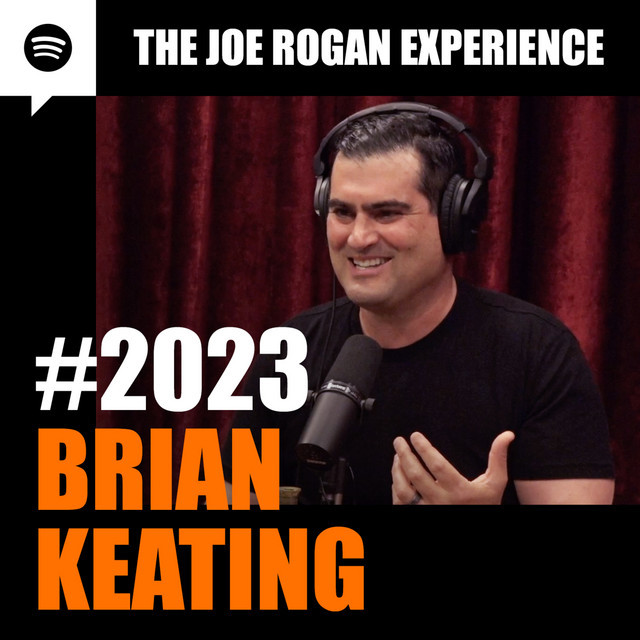22-Aug-23
This podcast explores a fascinating conversation with Brian Keating, a renowned cosmologist, on the history of the telescope and its impact on our understanding of the universe. Keating, with his infectious enthusiasm and passion for science, sheds light on the intricate evolution of the telescope, from its humble beginnings as a simple magnifying device to its sophisticated role in modern astronomy. The podcast delves into the surprising connections between seemingly disparate historical events, weaving together the story of the Gutenberg Bible, eyeglasses, and the telescope as a testament to the interconnected nature of human ingenuity. Underlying themes explore the scientific method, the pursuit of knowledge, and the enduring power of curiosity in shaping our world.
1. The Telescope as a Revolutionary Tool:
Keating emphasizes the profound impact of the telescope on human history.
It wasn’t Galileo who invented the telescope, but rather he perfected it, transforming it from a simple magnifying device into a tool that revolutionized astronomy.
The telescope acted as a lever, shifting our understanding of the universe from a geocentric model to a heliocentric one, challenging long-held beliefs and paving the way for modern scientific thought.
Keating even attributes his own path to becoming a scientist to the wonder he experienced as a child gazing through a telescope.
2. The Serendipitous Nature of Scientific Discovery:
The telescope’s power lies not just in its ability to magnify but also in its capacity for serendipitous discovery.
Galileo didn’t set out to find craters and mountains on the moon; he stumbled upon them through observation, sparking a wave of further scientific investigation.
The scientific method, Keating highlights, is often driven by unexpected observations and the audacity to question accepted truths.
This emphasizes the importance of curiosity and open-mindedness in the pursuit of scientific advancement.
3. The Limitations of Refracting Telescopes:
While refracting telescopes, using lenses, were revolutionary in their time, they have inherent limitations.
The size of refracting telescopes is restricted due to the tendency of glass to sag and distort light at larger scales.
Chromatic aberration, the phenomenon where different wavelengths of light focus at different points, poses a challenge for achieving clarity in refracting telescopes.
This paved the way for the development of reflecting telescopes, which use mirrors to overcome these limitations.
4. The Rise of Reflecting Telescopes:
Reflecting telescopes, pioneered by Isaac Newton, use mirrors to focus light, offering several advantages over refracting telescopes.
They can be built much larger, allowing for greater light-gathering capabilities.
They are less susceptible to chromatic aberration, delivering clearer and sharper images.
The use of mirrors also allows for easier support, enabling the construction of truly massive telescopes like the Keck Observatories and the James Webb Space Telescope.
5. The Simon’s Observatory: A New Era of Cosmic Exploration:
The Simon’s Observatory, a collaborative project led by Brian Keating and colleagues, represents a significant leap forward in astronomical observation.
This state-of-the-art observatory utilizes two 6-meter diameter reflecting telescopes, positioned at an altitude of 17,200 feet in the Atacama Desert of Chile.
Its high-altitude location minimizes atmospheric interference, providing exceptional clarity for observing the cosmos.
The Simon’s Observatory aims to become the world’s most sensitive astronomical observatory, opening new doors for understanding the origins and evolution of the universe.
6. The Importance of Dark Skies:
Light pollution, Keating emphasizes, is a significant obstacle to our ability to appreciate and understand the night sky.
It obscures the view of celestial objects, depriving us of the awe-inspiring spectacle that captivated our ancestors.
Keating stresses the need to protect dark skies, allowing for better astronomical observation and reconnecting humanity with the wonders of the universe.
7. The Cosmic Microwave Background: A Window into the Early Universe:
The cosmic microwave background (CMB), a faint afterglow of the Big Bang, provides a glimpse into the early universe.
The CMB is best observed using microwave instruments, revealing a unique “constellation” of patterns that are invisible to the human eye.
Keating highlights the significance of the CMB as a key source of information about the origin and evolution of the universe.
8. The Future of Astronomy: A Blend of Technology and Curiosity:
Keating’s conversation with Joe Rogan illustrates the dynamic intersection of technology and human curiosity in advancing our understanding of the universe.
The advancements in telescope technology, coupled with the relentless pursuit of knowledge by scientists like Brian Keating, continue to push the boundaries of our understanding.
The podcast encourages a sense of wonder and appreciation for the mysteries of the cosmos, inspiring future generations to embark on their own journeys of discovery.
5 Memorable Quotes:
“It’s the actual tool, not this one, but the telescope is really the machine that changed the world the most.”
“I became a scientist at thanks to getting a telescope in about age 12.”
“This is God’s view of the cosmos, if you will.”
“Light pollution is preventing our children from understanding what the ancients knew.”
“It is a tragedy that we suffer from light pollution so much so that we don’t even know what we don’t see.”
